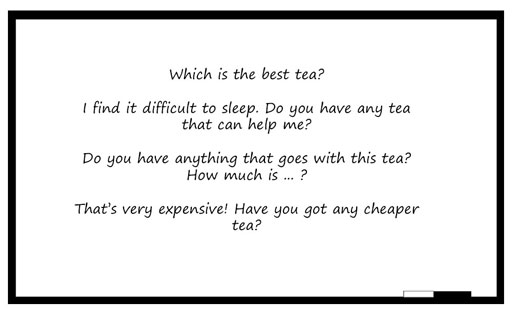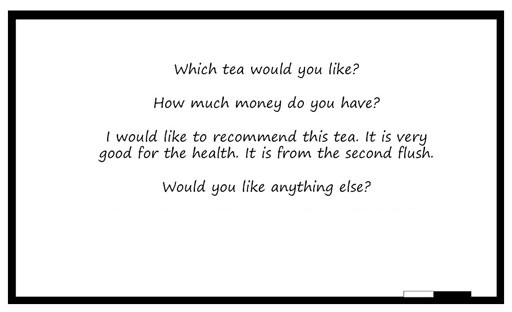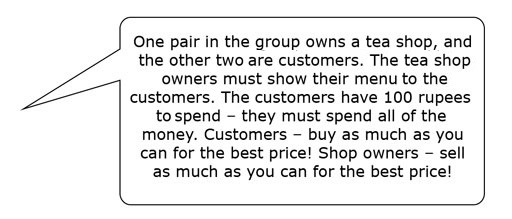3 Giving students useful and positive feedback
So far in this unit you have learned about techniques to help students be more motivated about speaking, and to speak more confidently in English, but this does not mean that they will not make mistakes when they speak. Learning to speak another language takes time, and the only way to learn is by trying to use new language. It is therefore important to make your classroom an encouraging place to be – a place where you and your students can try things out without criticism.
In Case Study 2, you read about a teacher who did a storytelling activity in groups with her students. Did you notice that the teacher said the following?

Pause for thought
|
There is evidence that correcting mistakes does not help learners of a language speak more accurately (Edge, 1993). Making mistakes is part of the language learning process. If students are to become fluent, confident speakers of English, then they need to practise using English and to be allowed to experiment with it and make mistakes. Classes need to include activities in which they can speak without being interrupted or stopped. A good activity for students to build up confidence and fluency in speaking is role play.
Role play activities can help young students develop confidence to speak in different social situations (see the video below). They are particularly useful for English language teaching, because with them you can create a lifelike situation for your students to practise. Each student is given a character. With other students in a group they have to act out a situation as if they were that character. For example, students could be customers and shopkeepers in a tea shop (or see Resource 1 in the unit Supporting speaking in English: pair and groupwork). Role play works best when students are encouraged to play the roles as realistically as possible, so, for example, the shopkeepers don’t know what the customers will order.
When acting out a role, students should experiment with new language. This means that they will make mistakes. Your feedback on these activities should help students improve their abilities and confidence. Read Case Study 3, in which a teacher describes how she gives feedback to her students after a role play activity.
Case Study 3: Mrs Elam feedback to students on a speaking activity
Mrs Elam is a secondary English teacher who reflects on how she gave feedback to her students after a role play activity.
My Class X students had just been studying the passage ‘Tea from Assam’ from Chapter 7 of the NCERT Class X textbook First Flight [see Resource 5]. Students had discussed information about tea: its popularity around the world; the best tea and how to make it; the history of growing and drinking it; and legends surrounding the drink.
This lesson about tea was good preparation for an activity where students could do a role play about buying and selling tea in a tea shop, so I told the class that we were going to do a role play about that.
I first asked the students to imagine that they wanted to buy some tea at a tea shop. I asked them what phrases they might use to buy tea and I wrote them on the board.
Then I asked students to imagine that they owned a tea shop. I told them to think about what they sold in the shop and to write a menu with prices. I gave them around five minutes to do this. I then asked them what phrases they might use to sell their items and wrote them on the board.
Finally, I put the students together in groups of four. I gave them these instructions:
I told the groups to begin, and they began playing the roles of shop owners and customers.
It wasn’t possible for me to listen to all of the groups in that time, so I concentrated on three groups. I always make sure that I focus on different groups of students each time we do a speaking activity in class. As they spoke, I listened and made a note of mistakes that they were making. I didn’t note down every mistake, of course, but I noted down mistakes that were common. I focused on the language that we had been learning in the most recent lessons. For example, in this lesson there are exercises about using prepositions like ‘over’, ‘by’ and ‘through’. I also noted down some good phrases that students were using.
After four minutes or so, I told everyone to swap roles – that is, the shop owners were now customers and vice versa. This time they were really getting into the roles and were making some good bargains!
When they had finished, I looked at my notes and told the class what they had done well, giving some examples of good language use. Then I copied ten of the sentences with mistakes on the board. I chose mistakes that many of the students made, and I was careful not to say who made the mistakes, as that could be humiliating. Here are some examples of the sentences with mistakes:
I then said:
I gave everyone five minutes to write the sentences correctly, and then I asked them for the correct versions. As they read out the correct versions, I corrected the sentences on the board. Doing this helps students to think about their mistakes and grammar, and it also helps them to see that we are correcting their mistakes when they do speaking activities.
The notes I make when students are speaking are also useful for me in keeping records. After speaking activities, I make notes about the students I listen to, and it helps me to see their progress and assess them.
Activity 4: Responding to students after a speaking activity
In Case Study 3, students did a speaking activity in groups. They played the roles of a shop owner and a customer. As they acted out the roles, the teacher listened to some groups and noted down some common, typical mistakes. You can use this technique when your students are doing any speaking activity. Follow these steps:
- The next time your students carry out a speaking activity in groups, focus on one or two of the groups. Make sure you choose different groups and students each time.
- Write down common and typical mistakes in your notebook. Remember that you can write down positive things too, such as phrases that are used very well.
- After the activity, write no more than ten of the sentences with mistakes on the board.
- Tell students that the sentences have mistakes, but don’t tell them what the mistakes are. Remember not to tell students who made the mistakes, as this can be humiliating for them. (See Resource 1 for some of the classroom language you might need to do this activity.)
- Give your students some time to think about and correct the mistakes individually.
- Ask students to work together to correct the mistakes on the board. Make sure you correct the versions written on the board.
- Always make sure you tell your class what they did well too.
- Note down the mistakes that many students are making and think about how you can create a lesson to support students in improving in this area.
Pause for thought After trying this activity in class, think about how an activity like this can help you record and assess your students’ learning. |
The notes you make in an activity like this can be used as records about students’ performance in speaking. Make notes about different students each time they do a speaking activity. Think about how you can support students to improve in the areas that they need it. (See the unit Supporting language learning through formative assessment.)
Remember that students respond to positive feedback too. Reward them for using English in the classroom. You could create a chart that lists all your students’ names. Each time one of your students speaks some English in class, you could add a star next to their name.
2 Giving your students the language skills they need to talk about a topic





